This project is firmly rooted in social science research including adherence to conventional method and statistical analysis, but the project has a glint in its eye: A desire to dig a little deeper with the aid of art and design in order to explore the possibilities of increased accessibility of urban big data. The big data which we based our research upon was obtained from the Urban Big Data Centre (iMCD project).
By possibilities, we really mean opportunities to make this ‘data’ and our aligned ‘life-wide literacies’ research accessible and desirable for public engagement. This is where the story starts.
This has been an adventure with some highs and lows. A commitment to harness new design technologies and integrate them in to our conversations and research ideas, has kept our project on track.
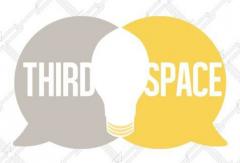 Telling stories of research and occupying ‘third space’ design conversations: A belief in our plans to integrate design within a body of quantitative data in order to make it engaging and fit for public consumption was supported through our success in obtaining an ESRC Impact Acceleration Account at the start of 2017. This enabled us to reach out to design partners, MakLab (now in administration) and more recently Creative Stirling, in order to start conversations between designer and researcher. Within these conversations we conveyed our research to designers and attempted to tell the ‘story’ of our big data research.
Telling stories of research and occupying ‘third space’ design conversations: A belief in our plans to integrate design within a body of quantitative data in order to make it engaging and fit for public consumption was supported through our success in obtaining an ESRC Impact Acceleration Account at the start of 2017. This enabled us to reach out to design partners, MakLab (now in administration) and more recently Creative Stirling, in order to start conversations between designer and researcher. Within these conversations we conveyed our research to designers and attempted to tell the ‘story’ of our big data research.
This development time created stimulating discourse where we tried to bridge the ‘cognitive spaces’ between communicating research and aligning good design ideas to convey this research to new audiences. These conversations created what we termed as, ‘third spaces’ of thought, where data and design were brought closer together through collective debate, discussion and knowledge exchange.
Working with Kate and Catherine to design and co-facilitate the delivery of their outputs for the ESRC Social Science Festival was an ideal opportunity for us to demonstrate the key attributes of our model, as an agile and responsive creative agency we were able to quickly adapt and share the challenge of problem solving, sourcing appropriate skills and resources to redesign an approach to fit the brief for the multiple literacies activities.
(Joe Hall, Director at Creative Stirling)
 Inspiration, scrapbooking and Pinterest: Utilising good design to convey research to the public is not it itself novel. We were keen to supplement our creative discussions with ‘idea boards’. Many of the ideas and possibilities that we used to stimulate our own development of our objects came from creating 21st century ‘scrapbooks’ filled with photos and other images, which in some way resonated with the ‘story’ we wanted to tell about our research. We used the ‘Pinterest’ platform (https://about.pinterest.com/en) to harness all our idea ‘scraps’ in one place, where the project team could all equally contribute by ‘pinning’ new images/photos to our ‘idea board’. The use of Pinterest worked exceptionally well as a way to support creative and collective discussions. Our scrapboard, hosted on Pinterest is now ‘public’ and open for worldwide view (link in reference list). In itself, Pinterest shares some interesting ‘big data’ themes such as providing an open platform for the use and re-use of existing data, in this case visual outputs such as photographs, drawings and other visual ‘stills’. Other visually minded social science researchers may find it useful to organise and capture their ideas across potentially infinite domains related to research, knowledge exchange and also learning and teaching ideas.
Inspiration, scrapbooking and Pinterest: Utilising good design to convey research to the public is not it itself novel. We were keen to supplement our creative discussions with ‘idea boards’. Many of the ideas and possibilities that we used to stimulate our own development of our objects came from creating 21st century ‘scrapbooks’ filled with photos and other images, which in some way resonated with the ‘story’ we wanted to tell about our research. We used the ‘Pinterest’ platform (https://about.pinterest.com/en) to harness all our idea ‘scraps’ in one place, where the project team could all equally contribute by ‘pinning’ new images/photos to our ‘idea board’. The use of Pinterest worked exceptionally well as a way to support creative and collective discussions. Our scrapboard, hosted on Pinterest is now ‘public’ and open for worldwide view (link in reference list). In itself, Pinterest shares some interesting ‘big data’ themes such as providing an open platform for the use and re-use of existing data, in this case visual outputs such as photographs, drawings and other visual ‘stills’. Other visually minded social science researchers may find it useful to organise and capture their ideas across potentially infinite domains related to research, knowledge exchange and also learning and teaching ideas.
Our ‘pins’: part of our Pinterest Board (https://www.pinterest.co.uk/glasgowkate/big-data-life-literacies/):

From proof of concept to production: Our intention was to connect research themes from our quantitative analysis (supported by Q-Step Intern, Michaella Drummond) to produce three design ‘outputs’ or ‘objects’. From our initial conversations and development meetings, we moved towards the prototyping phase. These objects had to fulfil some clear objectives. We wanted them to be visually appealing but with function and form. We also wanted the range of objects to appeal across the life-span from kids to older age adults. Towards the end of our development meetings, we took our ideas and sketches of prototypes for a ‘proof of concept’ workshop which we held with Community Development BA students. These students had direct links to the communities and areas where the ‘big data’’ had originally been collected. We were committed to incorporating feedback from these students in to our design ideas.
 We committed to three objects: The first object was presented as a laser cut (with some 3D printing) map of the greater Glasgow area, encompassing the local authorities where we engaged in comparative big data analyses. This map was designed as a plywood, laser-cut jigsaw ensuring that its function was self-explanatory while creating space for us to talk about what the jigsaw represented in terms of our research.
We committed to three objects: The first object was presented as a laser cut (with some 3D printing) map of the greater Glasgow area, encompassing the local authorities where we engaged in comparative big data analyses. This map was designed as a plywood, laser-cut jigsaw ensuring that its function was self-explanatory while creating space for us to talk about what the jigsaw represented in terms of our research.
 The second object was presented as a ‘quiz’. This quiz was used to encourage the public to immerse in the types of survey ‘life-literacy’ questions which our ‘big data’ research was based upon. The quiz was once again, largely self –explanatory in its function and could be attempted by a range individuals. The quiz materials were laser cut from plywood.
The second object was presented as a ‘quiz’. This quiz was used to encourage the public to immerse in the types of survey ‘life-literacy’ questions which our ‘big data’ research was based upon. The quiz was once again, largely self –explanatory in its function and could be attempted by a range individuals. The quiz materials were laser cut from plywood.
 Our last object was aimed at young children. This object was designed as a ‘literacy person’, make and take home badge. We were keen for the children to be able to personalise their own badge, using a range of life literacy ‘tokens’ as limbs to attach to bodies such as a monkey, robot, dinosaur and alien. These tokens were gender neutral and cut from plywood. They could be coloured in, so ensuring that the making activity and resulting engagement with us was not fleeting or superficial. By offering a children’s making activity we also ensured that a range of accompanying adults were brought to our exhibit.
Our last object was aimed at young children. This object was designed as a ‘literacy person’, make and take home badge. We were keen for the children to be able to personalise their own badge, using a range of life literacy ‘tokens’ as limbs to attach to bodies such as a monkey, robot, dinosaur and alien. These tokens were gender neutral and cut from plywood. They could be coloured in, so ensuring that the making activity and resulting engagement with us was not fleeting or superficial. By offering a children’s making activity we also ensured that a range of accompanying adults were brought to our exhibit.
 Saturday 4th November 2017: As part of the ESRC Festival of Social Science we took our objects and making activities to IKEA. On that particular day, IKEA had 8000 people through their doors. A conservative estimate is that we reached 800 of them with our activities on the importance of social science and what we can offer. We had over 130 children make and take home literacy badges. We spoke about our research with grannies, dads, kids, bemused shoppers and also to our fellow colleagues from across the University. We forged new partnerships with our fabulous colleagues from Creative Stirling who rose to the challenge of re-making our objects in a very short timescale after the closing of MakLab. We tried and tested our objects and can see longevity in their design and application across a range of future public engagement platforms.
Saturday 4th November 2017: As part of the ESRC Festival of Social Science we took our objects and making activities to IKEA. On that particular day, IKEA had 8000 people through their doors. A conservative estimate is that we reached 800 of them with our activities on the importance of social science and what we can offer. We had over 130 children make and take home literacy badges. We spoke about our research with grannies, dads, kids, bemused shoppers and also to our fellow colleagues from across the University. We forged new partnerships with our fabulous colleagues from Creative Stirling who rose to the challenge of re-making our objects in a very short timescale after the closing of MakLab. We tried and tested our objects and can see longevity in their design and application across a range of future public engagement platforms.
Impact comes in many forms. We chose to think carefully about what research can mean to individuals, the individuals, young and old who participate freely and willingly in social science research. Impact to us means having stimulating conversations with people outside of the University. In our case, it was working with design partners to bridge the gap between research and knowledge exchange with the public. And it was fun!
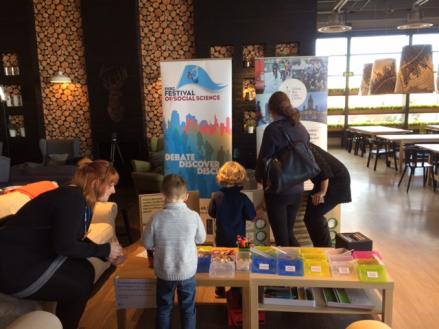

Life-literacies project team at IKEA interacting with families.
The story continues……
We were delighted with the interest and discussions we have had with a new audience, generated in the most part, due to the highly tactile objects which enabled us to tell the ‘story’ of our research. We now have objects that can be used across different public engagement contexts both formally at public engagement ‘badged’ events and also more informally, within communities including schools and colleges. We are also keen to get back to the business of supporting our research as we write for publication and look ahead to 2018 to apply for more funding to support our research on life-wide literacies. Thus ensuring that we strengthen the link between research and impact.
Some more reading?
Elliot, D. L., Reid, K. and Baumfield, V. (2017) Capturing visual metaphors and tales: innovative or elusive? International Journal of Research and Method in Education, 40(5), pp. 480-496.
Lido, C., Osborne, M. , Livingston, M., Thakuriah, P. and Sila-Nowicka, K. (2016) Older learning engagement in the modern city. International Journal of Lifelong Education, 35(5), pp. 490-508.
Reid, K., & Lido, C. (In preparation). Exploring the life-wide literacies gap. A multi-method, big data approach.
Shucksmith, M. (2016). InterAction: How can academics and the third sector work together to influence policy and practice? CarnegieUK Trust (Accessed Online, 09/11/2017 https://www.carnegieuktrust.org.uk/carnegieuktrust/wp-content/uploads/sites/64/2016/04/LOW-RES-2578-Carnegie-Interaction.pdf)
Dr Kate Reid
with Dr Catherine Lido, School of Education.
Connect with us [email protected] @KateReidGlasgow, [email protected] @CatherineLido
Buy Sneakers | Women's Nike Superrep
- Log in to post comments


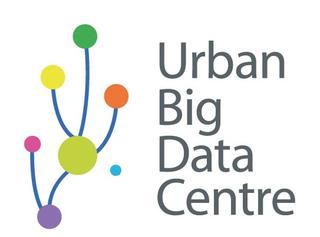


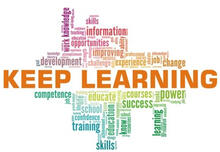

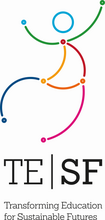

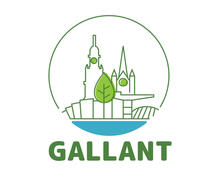
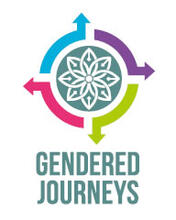
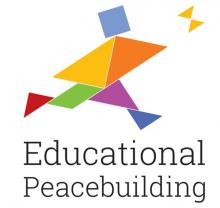
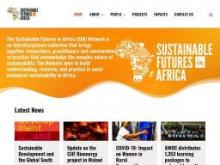


Latest Comments